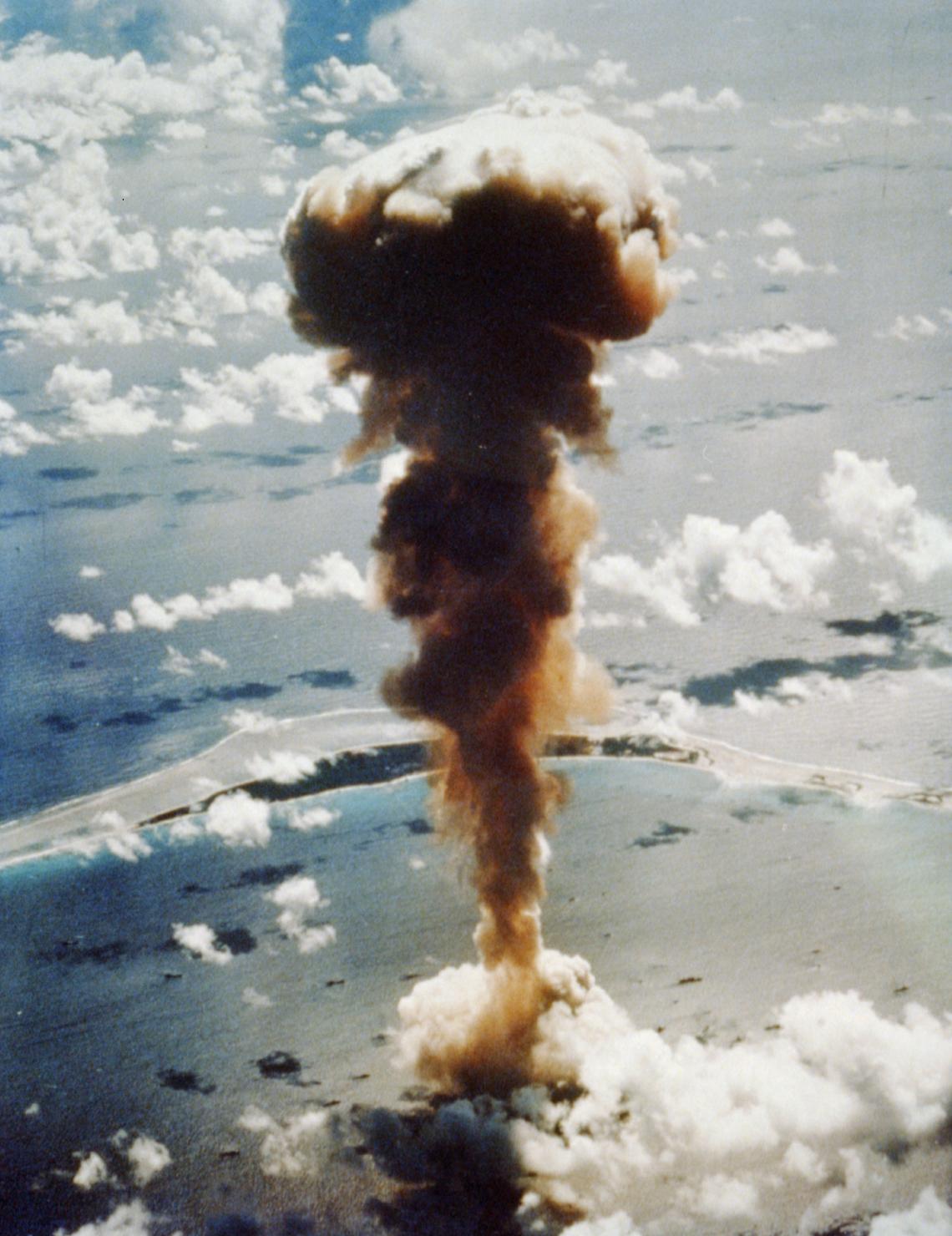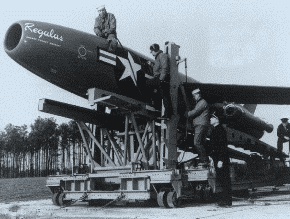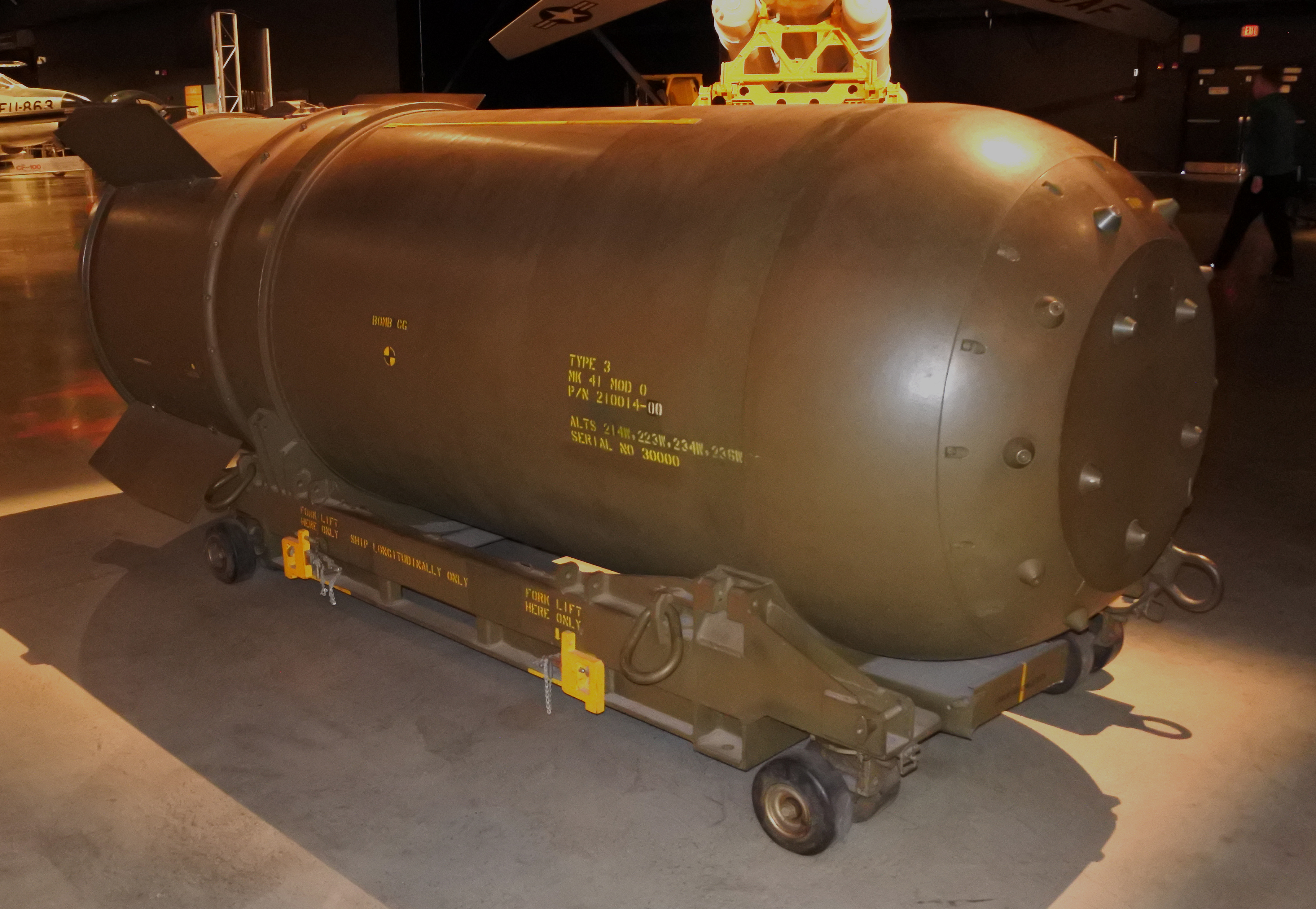|
Operation Redwing
Operation Redwing was a United States series of 17 nuclear test detonations from May to July 1956. They were conducted at Bikini and Enewetak atolls by Joint Task Force 7 (JTF7).Blumenson, Martin and Hugh D. Hexamer (1956). ''A History of Operation Redwing: The Atomic Weapons Tests in the Pacific''. Joint Task Force Seven Headquarters, Washington, D.C. p. 19. The entire operation followed '' Project 56'' and preceded ''Project 57''. The primary intention was to test new, second-generation thermonuclear weapons. Also tested were fission devices intended to be used as primaries for thermonuclear weapons, and small tactical weapons for air defense. ''Redwing'' demonstrated the first United States airdrop of a deliverable hydrogen bomb during test ''Cherokee''. Because the yields for many tests at Operation Castle in 1954 were dramatically higher than predictions, ''Redwing'' was conducted using an "energy budget": There were limits to the total amount of energy released, and th ... [...More Info...] [...Related Items...] OR: [Wikipedia] [Google] [Baidu] |
Project 56 (nuclear Test)
Operation Project 56 was a series of 4 nuclear tests conducted by the United States in 1955–1956 at the Nevada Test Site. These tests followed the ''Operation Wigwam'' series and preceded the ''Operation Redwing'' series. Introduction These experiments were safety tests, the purpose of which were to determine whether a weapon or warhead damaged in an accident would detonate with a nuclear yield, even if some or all of the high explosive components burned or detonated.National Nuclear Security Administration / Nevada Site Office, ''Plutonium Dispersal Tests at the Nevada Test Site'', April 2010DOE/NV-1046 The procedure for these tests was to fault the test bomb by removing a detonator wire, or perhaps all but one, for example, possibly enhancing the weapon with extra initiators or an especially enriched core, and then to fire the weapon normally (see Warhead design safety). If there is any nuclear yield in the firing, then the test is deemed a failure from a safety standpo ... [...More Info...] [...Related Items...] OR: [Wikipedia] [Google] [Baidu] |
List Of Nuclear Test Sites
This article contains a list of nuclear weapon explosion sites used across the world. It includes nuclear test sites, nuclear combat sites, launch sites for rockets forming part of a nuclear test, and peaceful nuclear test (PNE) sites. There are a few non-nuclear sites included, such as the Degelen Omega chemical blast sites, which are intimately involved with nuclear testing. Listed with each is an approximate location and coordinate link for viewing through GeoHack, and each site is linked to a Wikipedia page on the locality or the nuclear event(s) that occurred there. References See also * List of Milestone nuclear explosions * List of nuclear and radiation accidents and incidents * List of nuclear weapons tests * Worldwide nuclear testing counts and summary Nuclear weapons testing is the act of experimentally and deliberately firing one or more nuclear devices in a controlled manner pursuant to a military, scientific or technological goal. This has been done on ... [...More Info...] [...Related Items...] OR: [Wikipedia] [Google] [Baidu] |
Enewetak Atoll Nuclear Explosive Tests
Enewetak Atoll (; also spelled Eniwetok Atoll or sometimes Eniewetok; mh, Ānewetak, , or , ; known to the Japanese as Brown Atoll or Brown Island; ja, ブラウン環礁) is a large coral atoll of 40 islands in the Pacific Ocean and with its 664 people (as of 2011) forms a legislative district of the Ralik Chain of the Marshall Islands. With a land area total less than , it is no higher than and surrounds a deep central lagoon, in circumference. It is the second-westernmost atoll of the Ralik Chain and is west from Bikini Atoll. It was held by the Japanese from 1914 until its capture by the United States in February 1944, during World War II, then became Naval Base Eniwetok. Nuclear testing by the US totaling the equivalent of over 30 megatons of TNT took place during the Cold War; in 1977–1980, a concrete dome (the Runit Dome) was built on Runit Island to deposit radioactive soil and debris. The Runit Dome is deteriorating and could be breached by a typhoon, though ... [...More Info...] [...Related Items...] OR: [Wikipedia] [Google] [Baidu] |
Nuclear Testing At Bikini Atoll
Nuclear testing at Bikini Atoll consisted of the detonation of 23 nuclear weapons by the United States between 1946 and 1958 on Bikini Atoll in the Marshall Islands. Tests occurred at 7 test sites on the reef itself, on the sea, in the air, and underwater. The test weapons produced a combined fission yield of 42.2 Mt of TNT in explosive power. The United States and its allies were engaged in a Cold War nuclear arms race with the Soviet Union to build more advanced bombs from 1947 until 1991. The first series of tests over Bikini Atoll in July 1946 was codenamed Operation Crossroads. ''Able'' was dropped from an aircraft and detonated above the target fleet. The second, ''Baker'', was suspended under a barge. It produced a large Wilson cloud and contaminated all of the target ships. Chemist Glenn T. Seaborg, the longest-serving chairman of the Atomic Energy Commission, called the second test "the world's first nuclear disaster." The second series of tests in 1954 was code ... [...More Info...] [...Related Items...] OR: [Wikipedia] [Google] [Baidu] |
Explosions In 1956
An explosion is a rapid expansion in volume associated with an extreme outward release of energy, usually with the generation of high temperatures and release of high-pressure gases. Supersonic explosions created by high explosives are known as detonations and travel through shock waves. Subsonic explosions are created by low explosives through a slower combustion process known as deflagration. Causes Explosions can occur in nature due to a large influx of energy. Most natural explosions arise from volcanic or stellar processes of various sorts. Explosive volcanic eruptions occur when magma rises from below, it has very dissolved gas in it. The reduction of pressure as the magma rises and causes the gas to bubble out of solution, resulting in a rapid increase in volume. Explosions also occur as a result of impact events and in phenomena such as hydrothermal explosions (also due to volcanic processes). Explosions can also occur outside of Earth in the universe in events ... [...More Info...] [...Related Items...] OR: [Wikipedia] [Google] [Baidu] |
W50 (nuclear Warhead)
The W50 was an American thermonuclear warhead used on the MGM-31 Pershing short range nuclear missile. It was also used on the LIM-49 Nike Zeus anti-ballistic missile, but this program was cancelled before deployment. The W50 was developed by the Los Alamos National Laboratory. There were two major variants produced (Mod 1, Mod 2), in three yield options (the Y1 with 60 kiloton yield, Y2 with 200 kiloton yield, and Y3 with 400 kiloton yield). All variants were in diameter and long, weighing . The W50 used the Tsetse primary The Tsetse was a small American nuclear bomb developed in the 1950s that was used as the primary in several US thermonuclear bombs and as a small stand-alone weapon of its own. The Tsetse had a boosted composite core which used 2.25 kg Pu-239, 1. ... design for its first fission stage, along with several mid and late 1950s designs. The W50 is thought to have been the source of the W78 warhead's fusion second stage design. The W50 was manufactured from ... [...More Info...] [...Related Items...] OR: [Wikipedia] [Google] [Baidu] |
SSM-N-8 Regulus
The SSM-N-8A Regulus or the Regulus I was a United States Navy-developed ship-and-submarine-launched, nuclear-capable turbojet-powered second generation cruise missile, deployed from 1955 to 1964. Its development was an outgrowth of U.S. Navy tests conducted with the German V-1 missile at Naval Air Station Point Mugu in California. Its barrel-shaped fuselage resembled that of numerous fighter aircraft designs of the era, but without a cockpit. Test articles of the Regulus were equipped with landing gear and could take off and land like an airplane.''Regulus: The First Nuclear Missile Submarines'' documentary, Spark, 2002 When the missiles were deployed they were launched from a rail launcher, and equipped with a pair of Aerojet JATO bottles on the aft end of the fuselage. History Design and development In October 1943, Chance Vought Aircraft Company signed a study contract for a range missile to carry a warhead. The project stalled for four years, however, until May 1947 ... [...More Info...] [...Related Items...] OR: [Wikipedia] [Google] [Baidu] |
W27 Warhead
The Mark 27 nuclear bomb and closely related W27 warhead were two American thermonuclear bomb designs from the late 1950s. History and design The Mark 27 was designed by the University of California Radiation Laboratory (UCRL; now Lawrence Livermore National Laboratory) starting in the mid-1950s. The basic design concept competed with the Los Alamos Scientific Laboratory (LASL; now Los Alamos National Laboratory) design that would become the Mark 28 / B-28 nuclear bomb and W28 warhead. The Mark 27 was roughly twice as heavy as the Mark 28/B-28/W28 family of thermonuclear weapons. The Mark 27/W27 devices had a yield of versus the (later ) of the Mark 28/B-28/W28 weapons. The Mark 27 and W27 were produced from 1958; both were retired by 1964, as the Kennedy administration began to redirect funding from manned nuclear bomber programs. Both US Navy bombers carrying the Mark 27 bomb, the Douglas A-3 Skywarrior and North American A-5 Vigilante, were repurposed from the nuclear ... [...More Info...] [...Related Items...] OR: [Wikipedia] [Google] [Baidu] |
W25 (nuclear Warhead)
The W25 was a small nuclear warhead developed by the United States Air Force and Los Alamos Scientific Laboratory for air-defense use. It was a fission bomb with a nominal yield of 1.7 kt. The W25 was used for the MB-1 "Ding Dong", an unguided air-to-air rocket used by US Northrop F-89 Scorpion, F-101 Voodoo, and F-106 Delta Dart interceptor aircraft, and Canadian CF-101 Voodoo aircraft, as part of NATO nuclear sharing. The MB-1 entered service in 1957 and was eventually redesignated the AIR-2 Genie. Limited numbers were carried by Air National Guard F-106 aircraft until December 1984. History Genie application The W25 program began in March 1951, when the Division of Military Application suggested that the use of nuclear weapons to blunt enemy aircraft attacks be examined. However, little immediate action was taken because the state of the art in both warheads and missiles was not yet advanced enough for the proposal to be practicable. Technology soon improved and, by Febr ... [...More Info...] [...Related Items...] OR: [Wikipedia] [Google] [Baidu] |
B41 Nuclear Bomb
The B-41 (also known as Mk-41) was a thermonuclear weapon deployed by the United States Strategic Air Command in the early 1960s. It was the most powerful nuclear bomb ever developed by the United States, with a maximum yield of . The B-41 was the only three-stage thermonuclear weapon fielded by the U.S.The B-41 (Mk-41) Bomb Nuclear Weapon Archive. (accessed April 8, 2015). History In June 1955, the requested a feasibility study for a Class B (over weight) bomb and warhead. By summer of 1956, US Air Force Strategic Air Command produced a requirement for a Class B bomb, while the DoD produced a require ...[...More Info...] [...Related Items...] OR: [Wikipedia] [Google] [Baidu] |
Mark 15 Nuclear Bomb
The Mark 15 nuclear bomb, or Mk-15, was a 1950s American thermonuclear bomb, the first relatively lightweight () thermonuclear bomb created by the United States. A total of 1,200 Mark 15 bombs were produced from 1955 to 1957. There were three production variants: Mod 1, Mod 2, and Mod 3. The design was in service from 1955 to 1965. Specifications All three models were generally physically similar; weight of around , diameter of , length of . Models The Mod 1 corresponds to the Castle Nectar test of the Zombie weapon prototype. This test had a yield of . The Mod 2 corresponds to the Redwing Cherokee nuclear test of the TX-15-X1 test model, and had a yield of . Redwing Cherokee was the first US thermonuclear bomb airdrop test. a [...More Info...] [...Related Items...] OR: [Wikipedia] [Google] [Baidu] |
TNT Equivalent
TNT equivalent is a convention for expressing energy, typically used to describe the energy released in an explosion. The is a unit of energy defined by that convention to be , which is the approximate energy released in the detonation of a metric ton (1,000 kilograms) of TNT. In other words, for each gram of TNT exploded, (or 4184 joules) of energy is released. This convention intends to compare the destructiveness of an event with that of conventional explosive materials, of which TNT is a typical example, although other conventional explosives such as dynamite contain more energy. Kiloton and megaton The "kiloton (of TNT)" is a unit of energy equal to 4.184 terajoules (). The "megaton (of TNT)" is a unit of energy equal to 4.184 petajoules (). The kiloton and megaton of TNT have traditionally been used to describe the energy output, and hence the destructive power, of a nuclear weapon. The TNT equivalent appears in various nuclear weapon control treaties, and has b ... [...More Info...] [...Related Items...] OR: [Wikipedia] [Google] [Baidu] |






